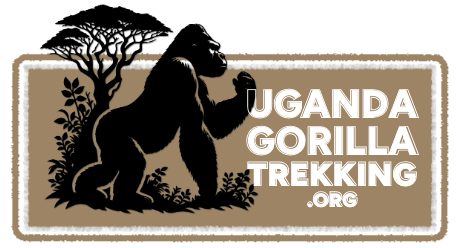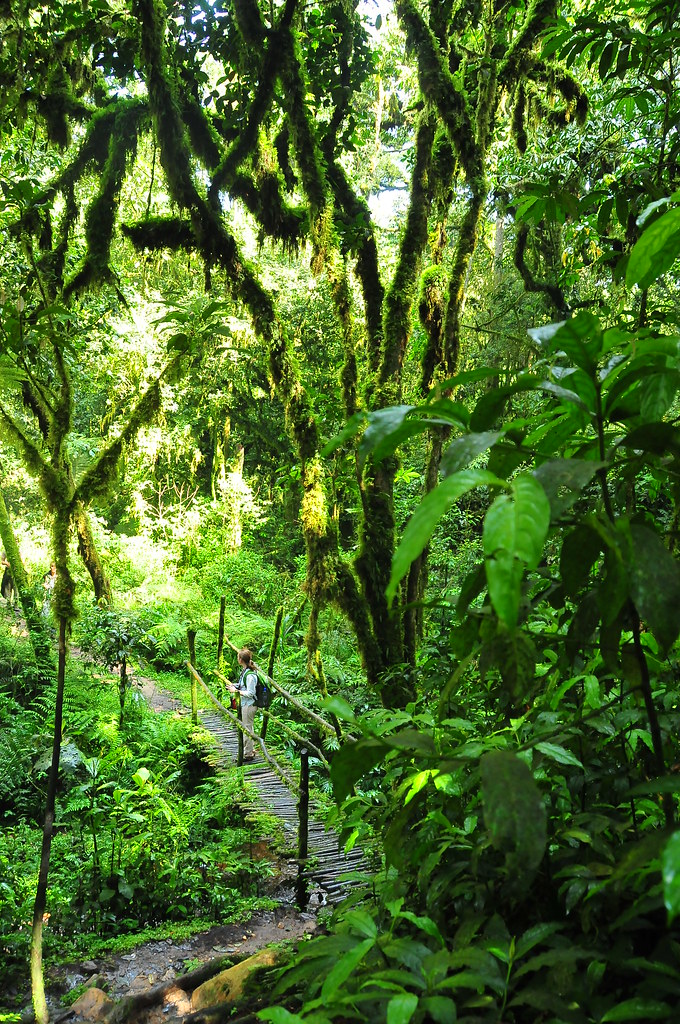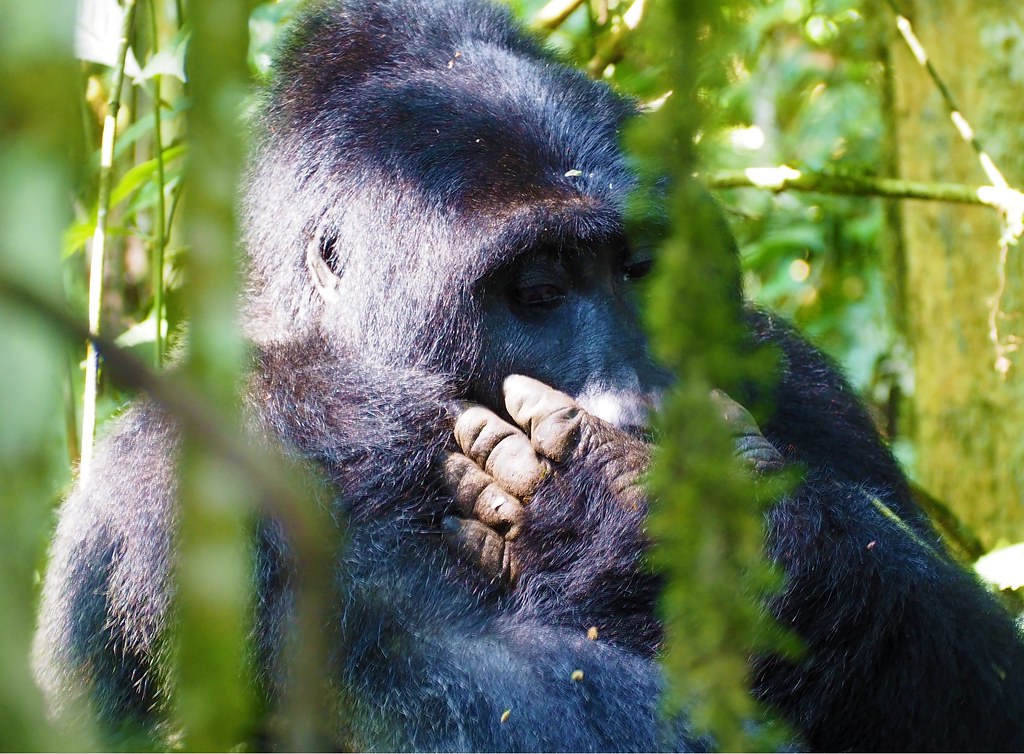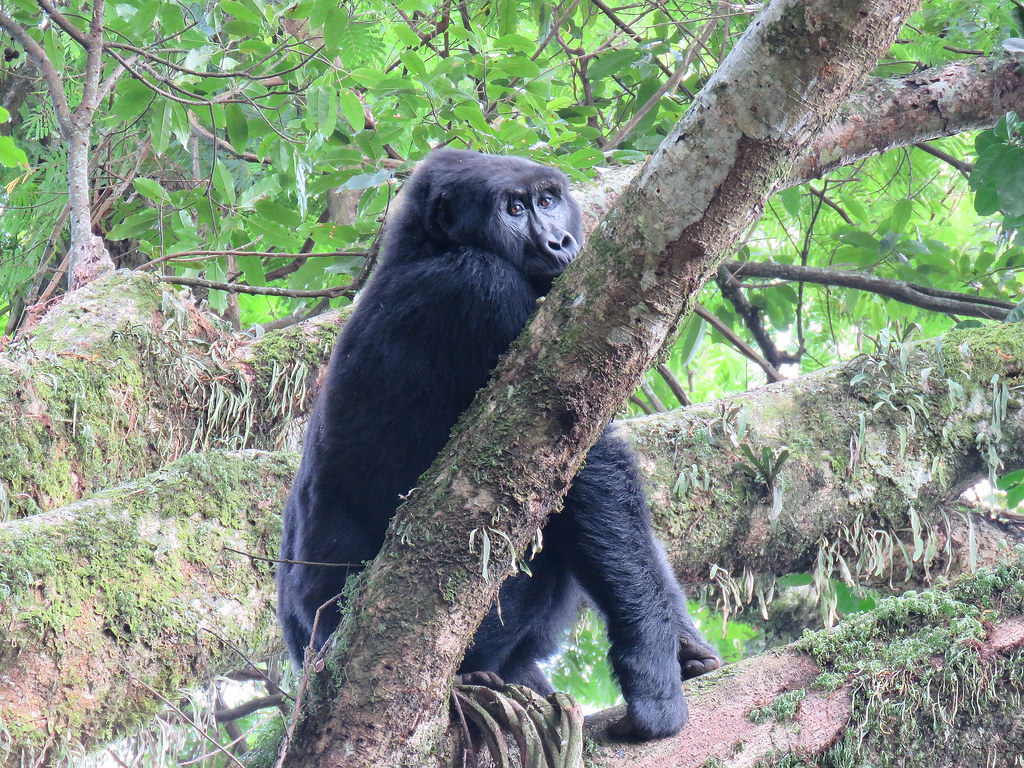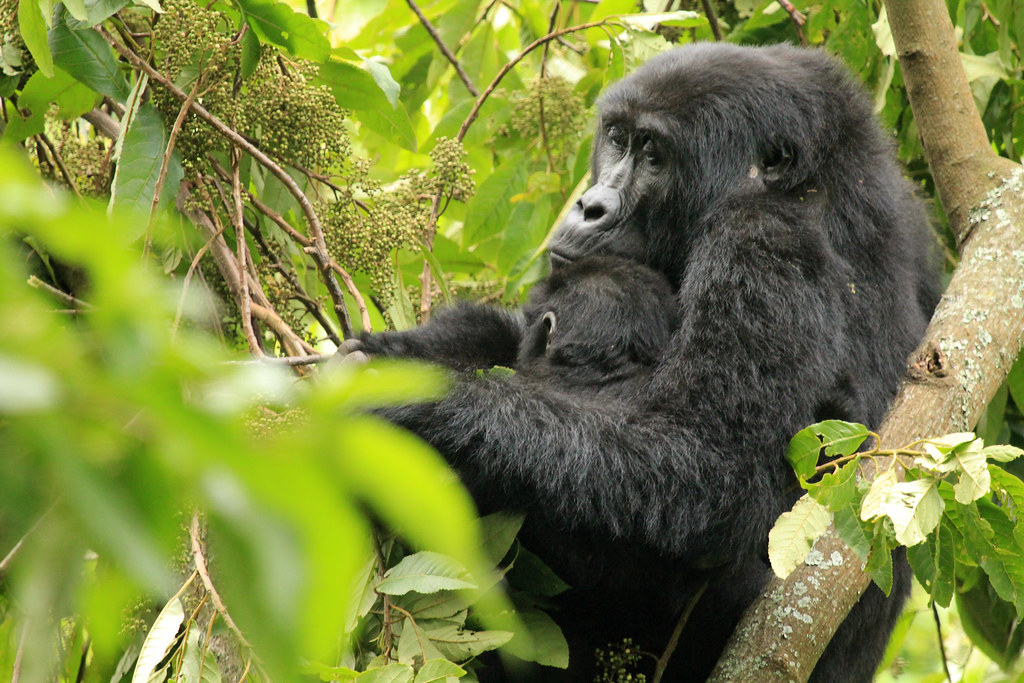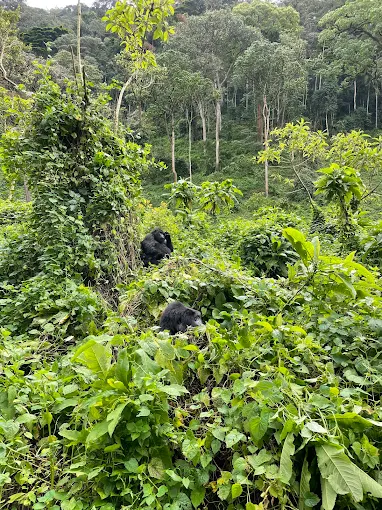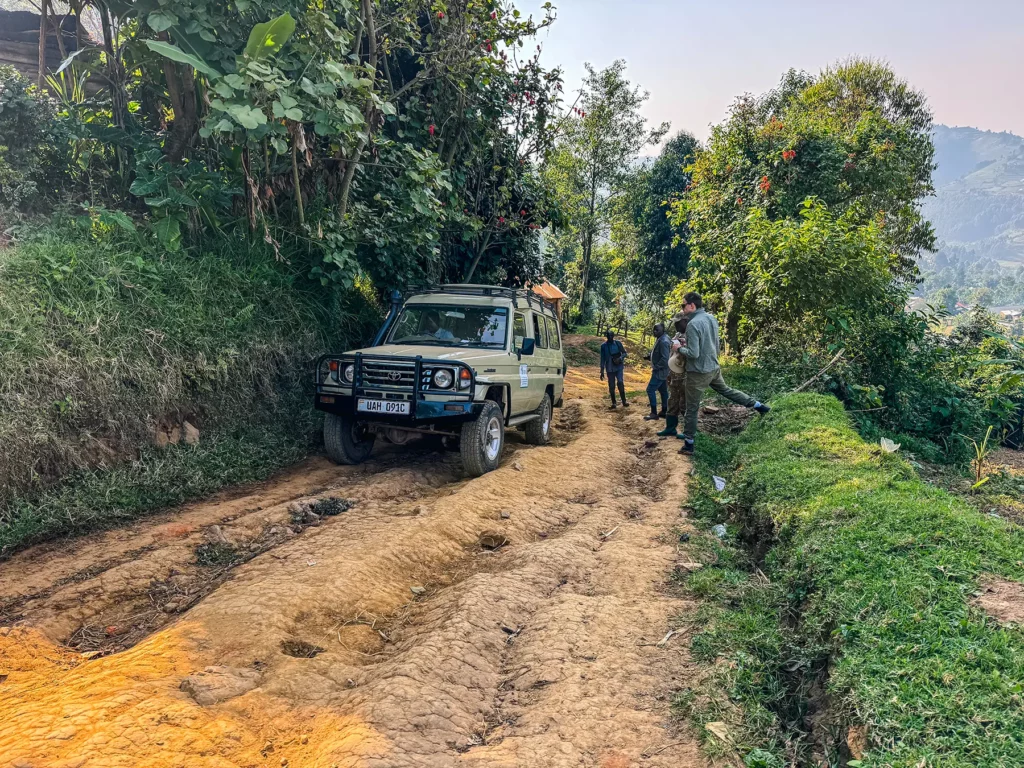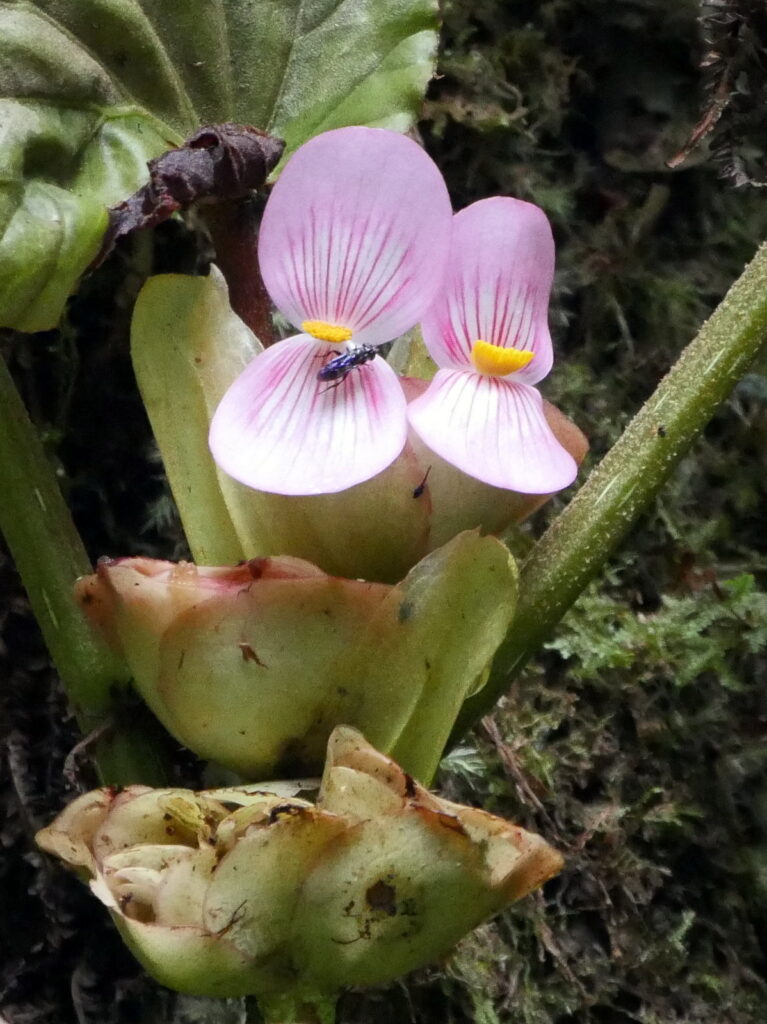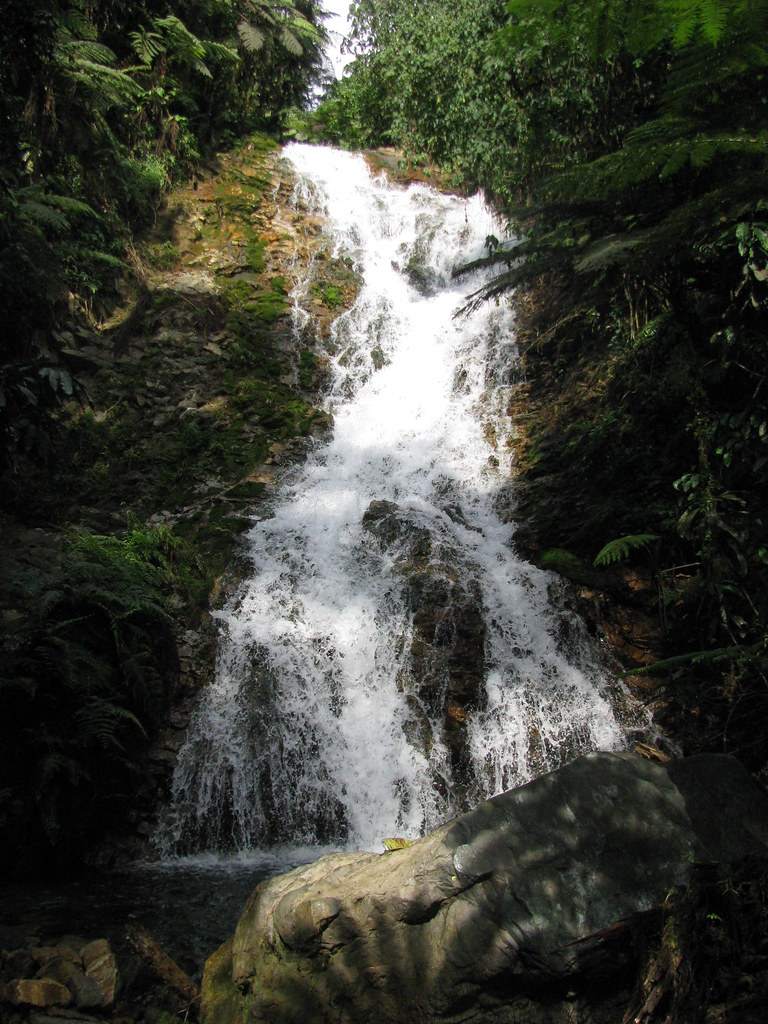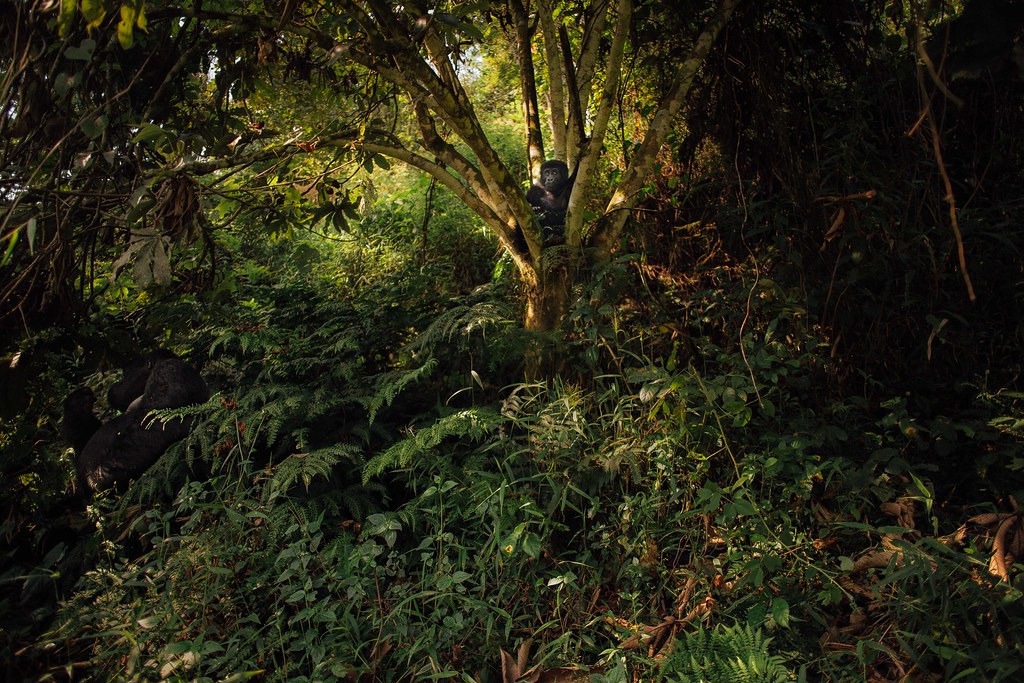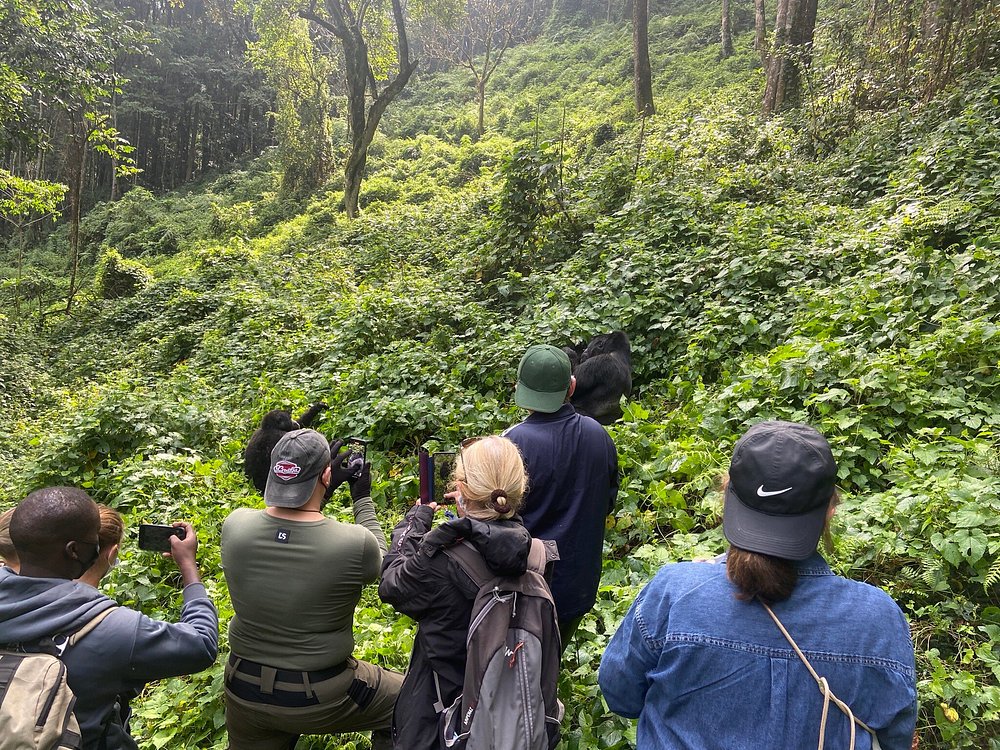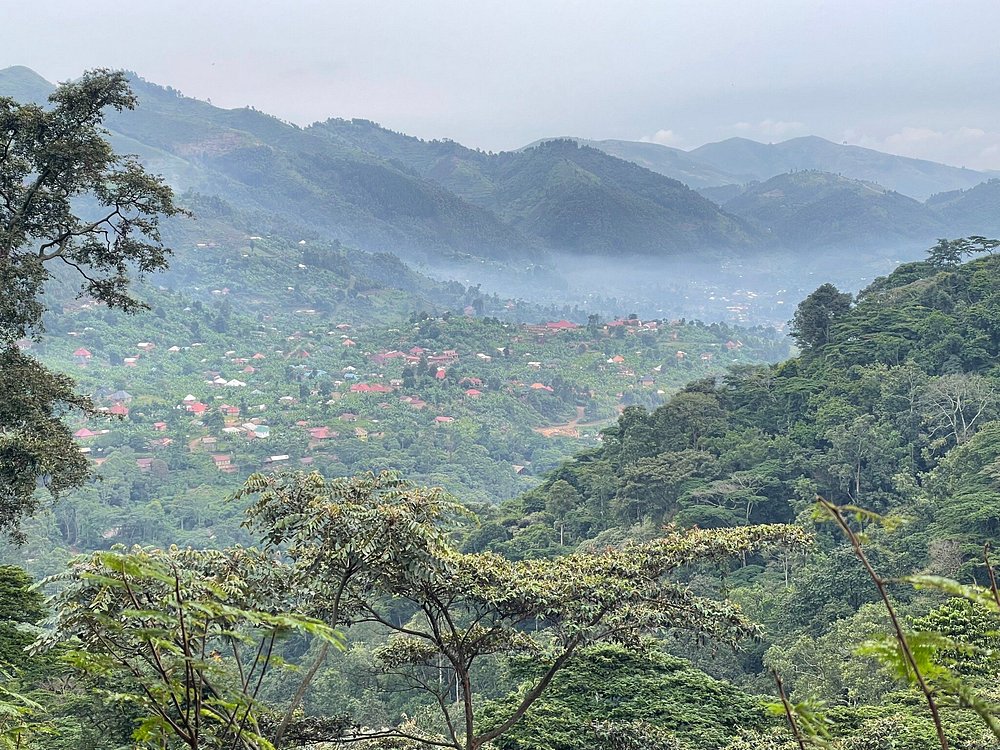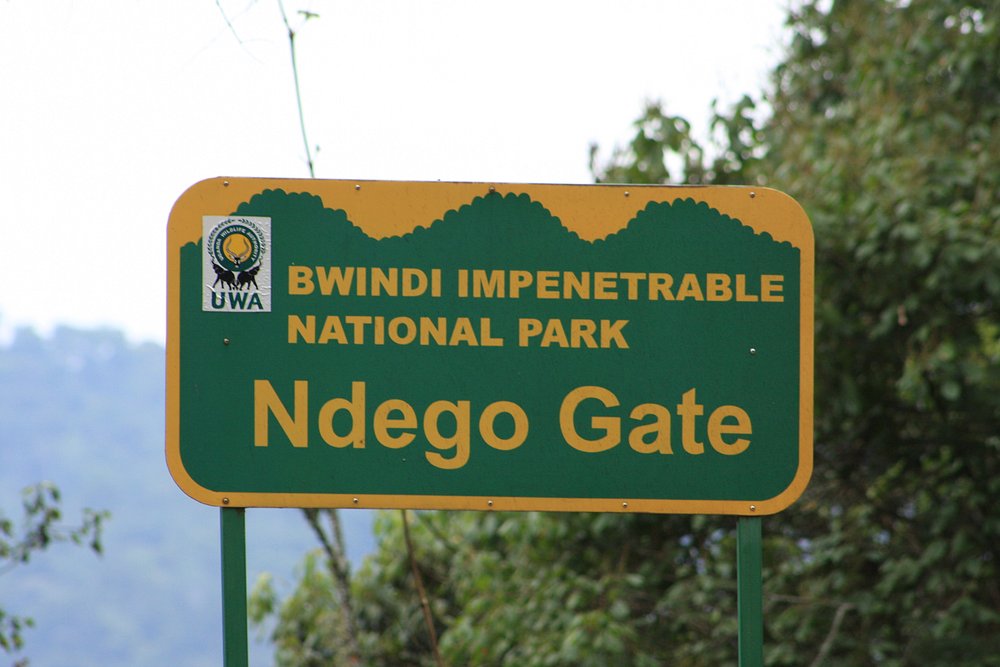Where the soul of the forest whispers in the mist
Bwindi Impenetrable National Park is located in southwestern Uganda, nestled within the highlands of the Albertine Rift Valley, a branch of the larger East African Rift. It spans across three main districts: Kisoro, Kanungu, and Rubanda, covering an area of approximately 331 square kilometers. The park sits along the border with the Democratic Republic of Congo, with its dense forests and mountainous terrain extending toward the edge of the great Virunga landscape—a region known for its exceptional biodiversity and endemic species.
Bwindi is positioned approximately 520 kilometers (320 miles) from Kampala, Uganda’s capital, and about 60–80 kilometers from the nearest regional towns like Kabale, Kisoro, and Rukungiri, depending on the sector of the park you are visiting. The park is divided into four main trekking sectors: Buhoma (north), Ruhija (east), Rushaga (south), and Nkuringo (southwest). Each of these has its own entry points, lodges, gorilla families, and accessibility options—making it crucial for travelers to know their specific destination within Bwindi before planning transport or accommodation.
The strategic location of Bwindi also allows for convenient access from neighboring Rwanda. Travelers can cross through the Katuna or Cyanika border posts, making Kigali International Airport a viable entry point for those aiming to trek gorillas in the park’s southern sectors.
In short, Bwindi’s location—while remote—is central to East Africa’s conservation efforts and gorilla tourism network. Surrounded by rolling hills, terraced farmlands, and cultural communities, it offers visitors not just a glimpse into a pristine forest ecosystem, but also into the heart of southwestern Uganda’s natural and cultural heritage.
So lace up your boots, grab your camera, and prepare to meet the wild — this is where your gorilla trekking dreams and unforgettable safari adventures truly begin.
Truly Iconic Highlights in Uganda
Trek through Bwindi’s mystical rainforest and meet the endangered mountain gorillas in their breathtaking natural home.
Encounter mountain gorillas and golden monkeys on Mgahinga’s misty volcanic trails, where culture and alpine wildlife thrive together.
Unwind after your trek with a peaceful canoe ride across Lake Bunyonyi, Uganda’s most tranquil and scenic highland lake.
Enhance your gorilla trekking safari with an optional chimpanzee encounter in Uganda’s lush forests, adding depth and diversity to your primate adventure
Where Is Bwindi Impenetrable National Park? Discover the Hidden Heart of Uganda’s Gorilla Country
Tucked away in the remote highlands of southwestern Uganda, Bwindi Impenetrable National Park is more than just a safari destination — it’s a sacred sanctuary for some of the world’s last remaining mountain gorillas and a geographical marvel steeped in ecological and cultural richness. While the name “Bwindi” often evokes images of misty forests and unforgettable gorilla encounters, many travelers first ask the essential question: where exactly is Bwindi located, and how do you get there?
This guide takes you into the heart of Bwindi’s location, its geographical layout, surrounding areas, and why understanding where it lies is key to planning an efficient and unforgettable gorilla trekking journey.
Where in Uganda is Bwindi Located?
Bwindi Impenetrable National Park lies in southwestern Uganda, positioned at the edge of the Albertine Rift Valley, which forms part of the western branch of the East African Rift System. The park spans across three main administrative districts: Kisoro, Kanungu, and Rubanda, covering approximately 331 square kilometers of rugged montane and lowland rainforest.
It is located roughly 520 kilometers (about 320 miles) from Kampala, the capital city of Uganda. The distance translates into a 9 to 10-hour drive by road or a 1.5-hour domestic flight followed by a short drive, depending on which part of the park you’re accessing.
Bwindi shares its western boundary with the Democratic Republic of Congo, making it part of the broader Virunga Conservation Landscape, which includes Uganda’s Mgahinga Gorilla National Park, Rwanda’s Volcanoes National Park, and Congo’s Virunga National Park. This transboundary region is home to over half of the world’s mountain gorillas.
Four Sectors, One Magical Forest
Bwindi is not a single-entry park—it is divided into four major trekking sectors, each located in different corners of the forest and each offering unique access, accommodation, and gorilla family experiences.
1. Buhoma Sector (Northwest Bwindi)
Located in Kanungu District, Buhoma is the most developed and accessible sector. It was the first area to be opened for gorilla trekking back in 1993. Buhoma is reachable via road from Queen Elizabeth National Park (especially Ishasha sector), making it an excellent choice for combining savannah game viewing with gorilla trekking.
2. Ruhija Sector (Northeast Bwindi)
Found in Rubanda District, Ruhija is set at higher elevation and is often cooler and mistier. It is known for being rich in birdlife and is a favorite for researchers and nature photographers. Ruhija lies between Buhoma and Kabale, which makes it fairly central among the four sectors.
3. Rushaga Sector (Southeast Bwindi)
Rushaga, located in Kisoro District, is one of the most densely populated sectors in terms of habituated gorilla families. It also offers gorilla habituation experiences—allowing visitors to spend up to 4 hours with semi-habituated gorillas. This sector is ideal for those entering Uganda via Rwanda.
4. Nkuringo Sector (Southwest Bwindi)
Nkuringo is also found in Kisoro District, and is arguably the most scenic but physically demanding sector due to its steep terrain. It offers incredible views of the Virunga Volcanoes and is favored by adventurous trekkers looking for more exclusive and less crowded routes.
Each sector operates independently, so knowing which one you’re trekking in determines your transport, lodge booking, and sometimes even your arrival airport. That’s why understanding the location of Bwindi—down to the sector—is absolutely essential when planning your safari.
Nearby Cities and International Access Points
Bwindi is surrounded by several small but important towns that serve as staging points for travelers:
Kabale: About 2–3 hours from Ruhija or Rushaga sectors.
Kisoro: Closest town to Rushaga and Nkuringo sectors; also near Mgahinga.
Rukungiri and Kihihi: Convenient for access to Buhoma via the Ishasha sector of Queen Elizabeth National Park.
The park can also be accessed from Kigali, Rwanda, especially for visitors trekking in the southern sectors (Rushaga and Nkuringo). The drive from Kigali International Airport to Bwindi is about 4–5 hours, making it a faster route compared to traveling from Entebbe or Kampala.
For those flying domestically within Uganda, Kihihi Airstrip serves the northern sectors, while Kisoro Airstrip serves the southern sectors. Tour operators often include road transfers between these airstrips and the respective lodges.
Strategic Location for Conservation and Tourism
Bwindi’s location on the Albertine Rift makes it one of the most ecologically rich places in Africa. The elevation range between 1,160 to 2,607 meters supports varying ecosystems—from lowland rainforest to montane forest—creating habitats for over 120 mammal species, 350 bird species, and the endangered mountain gorilla, of which Bwindi is home to nearly half of the world’s remaining population.
Its geographical isolation, rugged landscape, and limited access routes have helped protect its biodiversity. At the same time, its central location within East Africa’s tourism circuit allows it to remain accessible to eco-tourists, researchers, and conservationists from across the region and around the world.
More Bwindi Information to Know.
Bwindi Impenetrable Forest is a mountainous rainforest in southwestern Uganda, home to endangered mountain gorillas. Its unique climate, rich vegetation, community tourism, and conservation efforts make it a vital and unforgettable destination.
In the Realm of Giants – Bwindi & Mgahinga in Frames.
Wander through an elegant gallery capturing Uganda’s most exclusive gorilla sanctuaries, where ancient forests cradle the last mountain gorillas in a world of mist, mystery, and majesty.
Essential Planning Tips for Visiting Uganda’s National Parks.
Get ready for the wild heart of Africa with expert travel tips on when to visit, what to pack, where to go, and how to make the most of your safari across Uganda’s breathtaking national parks.
Why Uganda for Gorilla Trekking?
Uganda is not just a destination — it's the very soul of gorilla trekking. With over half of the world’s remaining mountain gorillas calling its misty forests home, Uganda offers the rarest encounters in their most authentic setting. Here, your journey is not rushed or crowded. Instead, you’re guided by experienced rangers through pristine jungles where gorillas live as they always have — wild, free, and magnificent
From insider travel insights to unforgettable trekking guides, our blog is your trusted path into Uganda’s wild heart — connecting you with mountain gorillas, breathtaking landscapes, and the soul-stirring adventures that make this land unlike any other.
